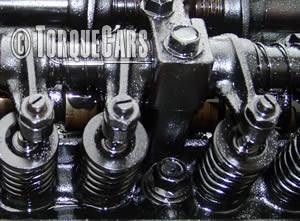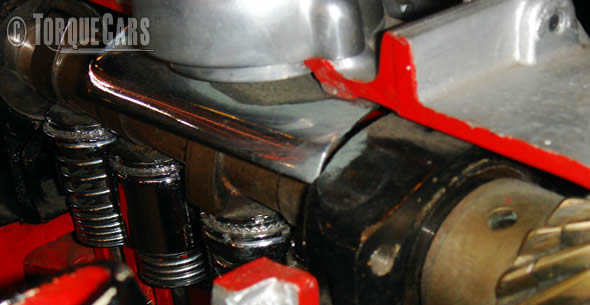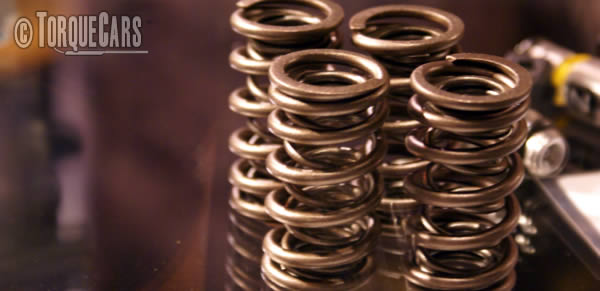Valve Springs
"Its Spring time."

The valves are like the doorways into the engine and control the flow of the intake air and fuel and then after combustion they control the exit of the exhaust gases.
As you can guess the valve springs work incredibly hard, and as you increase the power of your engine the valve choice is vital.
TorqueCars will now take a look at the many considerations taken into account when selecting valve springs.
When you push something really hard it will bounce when it hits another object. This is also true of the rapidly opening and closing valves in your engine. The last thing you want, though, is for your valves to be closing and then momentarily bouncing open. At best this will mean a loss of power and at worst you are talking about major engine damage.
If a valve spring gets worn it effectively loses it pressure and is unable to fully close the valve with similar outcomes to the bounce problem.
If your spring tension is too great then you will exert extra pressure on the cam and this will accelerate the cam wear. This actually now implies that the selection of a valve spring is pretty essential and depends a lot on the engine power and operating speeds.
When you buy a set TorqueCars recommend going with a fully matched set within 5-8% tolerance on the spring rate. You want all of the valves to be opening and closing at the same rates otherwise the dynamic balance of the engine will be upset.

Valve spring retainers are also an important part of the tuning equation. TorqueCars would advise never to fit new springs with old retainers. You should match the spring with the retainer and can choose from hardened steel to titanium and other alloys in various grades.
Spring sizes are also important.When installed the spring need to compress without binding (where the coils touch) and it needs to be long enough to allow the valve to full open. SPRINGS MUST NEVER BE CUT TO REDUCE THEIR HEIGHT. Cutting the springs dramatically alters the dynamics of the spring and must never be done although you may be able to get a lower profile retainer to give a little more space.

Most valve springs come with a protective coating to resist corrosion, if this becomes scratched it will become a weak spot and expose the spring to stress failure. Keep the engine speed down until the engine oil (not water) reaches the operating temperature and take it easy for the first few hundred miles. It is worth checking the springs after a break in period as they tend to soften up.
Dual springs per valve give better performance characteristics, and allow more precise tuning, although some manufacturers switched to single springs in engines around 1996. If you are building a high revving engine TorqueCars recommend that you use a dual spring due to the extra resistance to valve train drag.
For more car and model specific discussions of this and our other tuning articles please join our forum and meet our friendly and enthusiastic tuning community.
If you liked this page please share it with your friends, drop a link to it in your favourite forum or use the bookmarking options to save it to your social media profile.
Check out TorqueCars new YouTube channel, and see their awesome new content...
Feedback
Please use our forums if you wish to ask a tuning question, and please note we do not sell parts or services, we are just an online magazine.
Help us improve, leave a suggestion or tip
